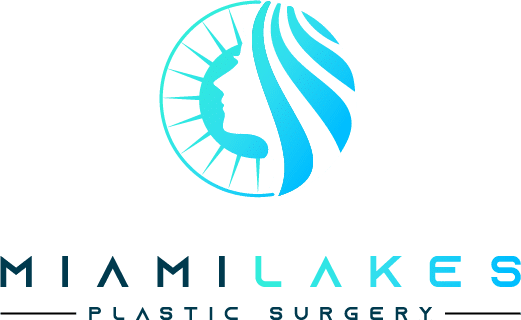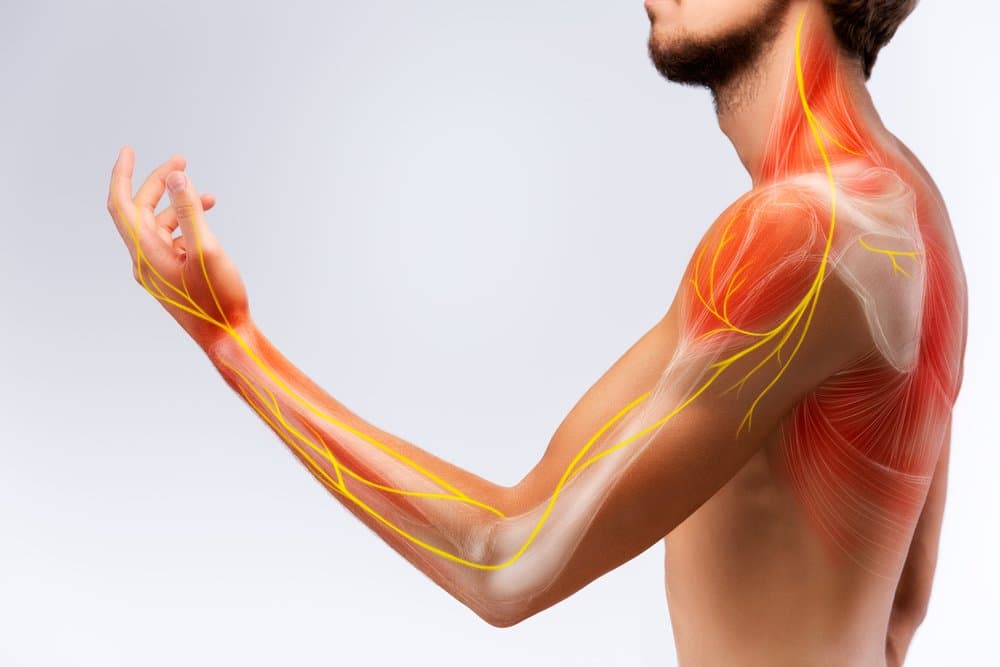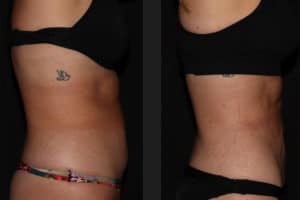A lot of people get arm lift surgery, which is also called brachioplasty, to make their arms look toned and sculpted. Although it can make your arms look really good, Nerve pain after brachioplasty can be distressing, but rest assured.
Sometimes, surgery can cause nerve pain when the nerves get damaged or irritated. This can make you feel strange sensations like tingling or shooting pain, which can mess up your everyday stuff. In this article, we’ll talk about why nerve pain happens after brachioplasty and share some ways to make it feel better.
What Nerve can Brachioplasty Damage?
During a brachioplasty procedure, there is a possibility of damage or irritation to the nerves in the arms. The specific nerves that can be affected include:
- Radial Nerve: The radial nerve runs along the back of the upper arm and is responsible for controlling the muscles that extend the wrist and fingers. Damage to this nerve can result in weakness or loss of sensation in the back of the forearm and hand.
- Ulnar Nerve: The ulnar nerve travels along the inner side of the upper arm and is responsible for controlling the muscles of the hand and providing sensation to the little finger and half of the ring finger. Injury to this nerve can lead to symptoms such as numbness, tingling, or weakness in the hand and fingers.
- Median Nerve: The median nerve runs down the center of the forearm and controls the muscles that flex the wrist and fingers. It also provides sensation to the thumb, index finger, middle finger, and half of the ring finger. Damage to the median nerve can cause weakness, numbness, or pain in these areas.
It’s important to note that nerve damage during brachioplasty is relatively rare, and skilled surgeons take precautions to minimize the risk. However, it is still a potential complication that patients should be aware of.
How Long Does Nerve Pain Last After Brachioplasty?
The duration of nerve pain after brachioplasty can vary from person to person. In general, nerve pain is expected to be temporary and should gradually improve over time as the nerves heal. However, it is important to note that the exact duration of nerve pain can depend on various factors, including the individual’s healing process, the extent of the surgery, and the specific nerves affected.
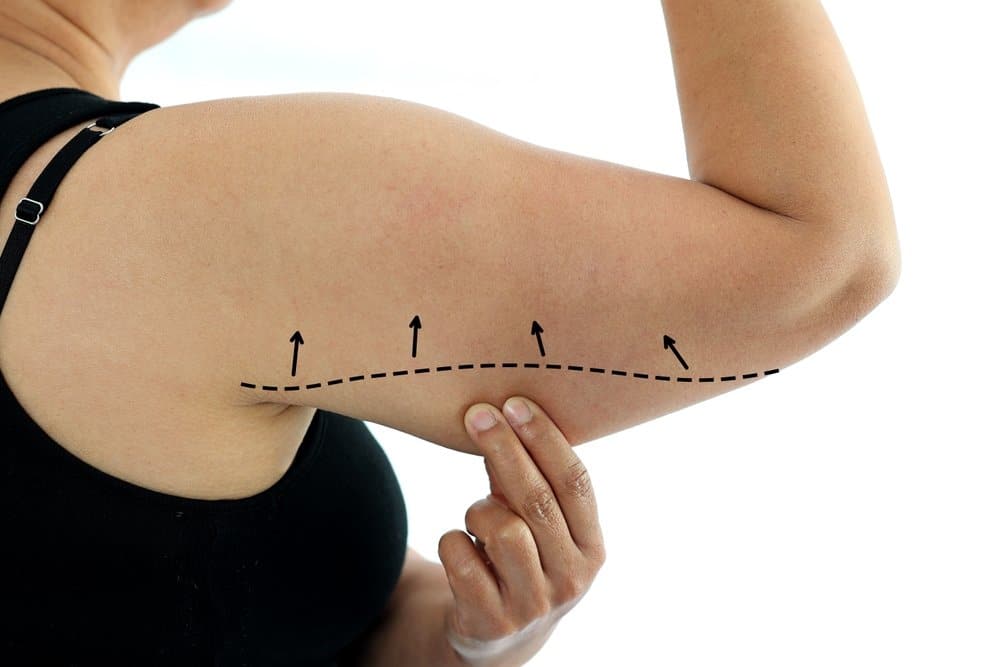
Typically, patients may experience nerve pain, numbness, tingling, or sensitivity in the arms for several weeks to a few months following brachioplasty. During this time, it is not uncommon for the nerve sensations to fluctuate, with some days feeling better than others.
In most cases, nerve pain gradually subsides as the nerves regenerate and heal. It is important to follow the post-operative instructions provided by your surgeon and engage in any recommended physical therapy or rehabilitation exercises to help promote healing and alleviate discomfort.
What Helps With Nerve Pain After Brachioplasty?
Managing nerve pain after brachioplasty involves a combination of approaches to alleviate discomfort and promote healing. Here are some strategies that can help with nerve pain after the procedure:
- Pain Medications: Over-the-counter nonsteroidal anti-inflammatory drugs (NSAIDs) can help reduce mild to moderate nerve pain. For more severe pain, your doctor may prescribe medications such as gabapentin or pregabalin, which specifically target nerve pain.
- Nerve Blocks: Nerve blocks involve the injection of a local anesthetic near the affected nerves to provide temporary pain relief. This can be beneficial in managing acute nerve pain after brachioplasty.
- Physical Therapy and Rehabilitation: Engaging in gentle stretching exercises and range-of-motion techniques can help reduce nerve pain and promote healing. A physical therapist experienced in post-brachioplasty recovery can provide personalized guidance.
- Transcutaneous Electrical Nerve Stimulation (TENS): TENS therapy involves the application of low-voltage electric currents to the affected area, providing pain relief. Discuss with your healthcare professional to determine if TENS therapy is suitable for you.
- Ice Packs: Applying ice packs to the surgical site can help reduce inflammation and provide temporary relief from nerve pain.
- Compression Garments: Wearing compression garments as recommended by your surgeon can help reduce swelling and provide support to the surgical area, potentially alleviating nerve pain.
- Patience and Rest: Allow yourself ample time to heal and rest. Avoid activities that strain the surgical site and follow your surgeon’s post-operative instructions carefully.
- Topical Pain Relief: Some topical creams or gels containing ingredients like lidocaine or capsaicin may provide localized pain relief. Consult with your doctor before using any topical treatments.
- Mind-Body Techniques: Relaxation techniques such as deep breathing, meditation, or yoga can help manage pain and promote overall well-being during the recovery process.
- Open Communication with Your Surgeon: Keep your surgeon informed about your pain levels and any concerns you may have. They can provide guidance, monitor your progress, and adjust your pain management plan if necessary.
It’s important to remember that nerve pain after brachioplasty is often temporary and tends to improve over time as the nerves heal. However, if you experience persistent or severe pain, or if you have any unusual symptoms, it’s essential to consult with your surgeon promptly to ensure proper evaluation and management.
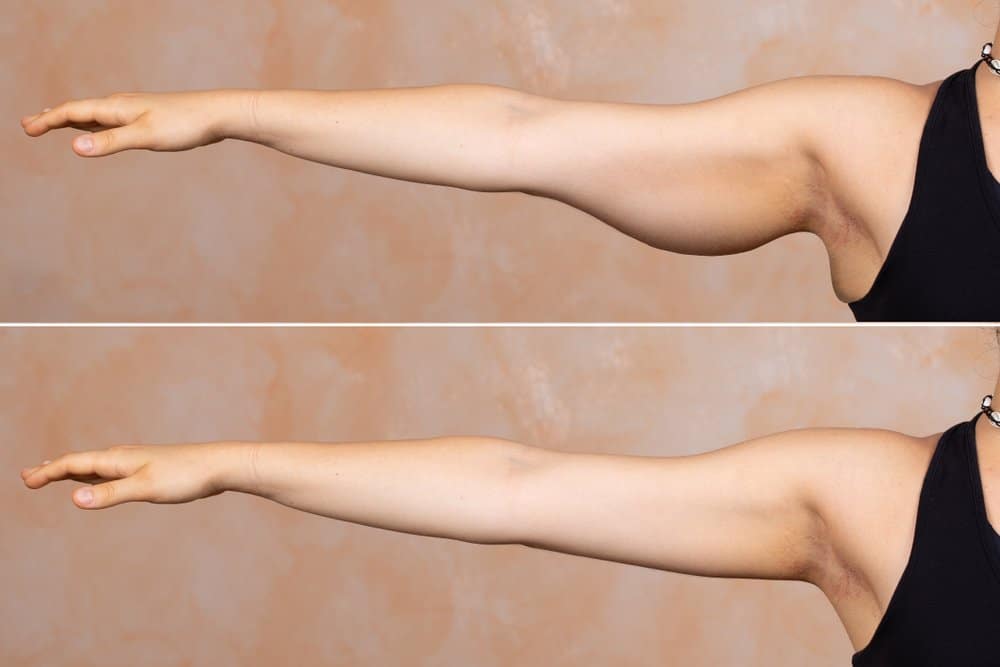
Alleviating Nerve Pain Naturally: Holistic Approaches for Brachioplasty Patients
Nerve pain, also known as neuropathic pain, can be a challenging issue to manage. While I can provide some holistic approaches that may help alleviate nerve pain, it’s important to note that I’m an AI language model and not a medical professional. It’s always best to consult with your healthcare provider for personalized advice and guidance.
That being said, here are some holistic approaches that may help with nerve pain after brachioplasty:
- Acupuncture: Acupuncture involves the insertion of thin needles into specific points on the body to stimulate nerves and promote healing. Some studies suggest that acupuncture can help reduce nerve pain and improve overall well-being. Consult with a licensed acupuncturist to see if this approach is suitable for you.
- Herbal remedies: Certain herbs have analgesic and anti-inflammatory properties that may help alleviate nerve pain. Examples include turmeric, ginger, boswellia, and St. John’s wort. However, herbal remedies can interact with medications or have side effects, so it’s essential to consult with a qualified herbalist or healthcare provider before using them.
- Physical therapy: Physical therapy exercises and techniques can help improve circulation, reduce muscle tension, and enhance nerve function. A physical therapist can develop a personalized exercise plan to address your specific needs and provide guidance on proper stretching and strengthening exercises.
- Mind-body techniques: Practices like meditation, deep breathing exercises, and guided imagery can help manage pain by promoting relaxation and reducing stress. These techniques may help redirect your focus away from the pain, providing some relief.
- Transcutaneous electrical nerve stimulation (TENS): TENS involves applying low-voltage electrical currents to the skin via electrodes. This therapy aims to disrupt pain signals and stimulate the production of endorphins, the body’s natural painkillers. TENS units can often be purchased for home use, but it’s advisable to consult with a healthcare professional for proper guidance.
- Hot and cold therapy: Alternating between hot and cold compresses or baths may help relieve nerve pain. Heat can promote blood flow and relax muscles, while cold can numb the area and reduce inflammation. Be cautious with temperature extremes and monitor your skin’s response to avoid burns or frostbite.
- Nutritional support: A balanced diet rich in anti-inflammatory foods and nutrients can support nerve health. Consider incorporating foods high in omega-3 fatty acids (such as salmon and chia seeds), antioxidants (like berries and leafy greens), and B vitamins (found in whole grains, legumes, and nuts) into your meals.
Remember, these holistic approaches may offer some relief, but individual responses can vary. It’s crucial to work closely with your healthcare provider to develop a comprehensive plan that addresses your specific condition and needs.
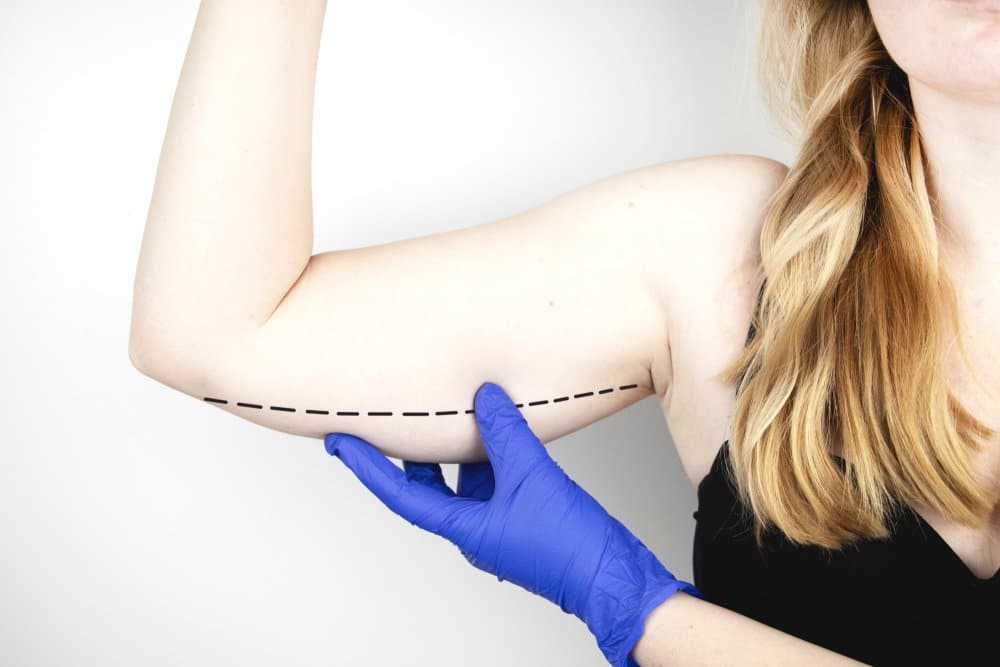
Expert Tips for Reducing Nerve Pain Sensations Post-Brachioplasty
I’m not a doctor, but I can offer some general tips that may help reduce nerve pain sensations after brachioplasty (arm lift surgery). However, it’s important to consult with your surgeon or healthcare provider for personalized advice. Here are some suggestions:
- Medications: Your doctor may prescribe medications such as non-steroidal anti-inflammatory drugs (NSAIDs), opioids, or neuropathic pain medications to help manage nerve pain. Follow your doctor’s instructions regarding dosage and frequency.
- Cold Therapy: Applying ice packs or cold compresses to the surgical area can help reduce inflammation and numb the nerves, providing temporary pain relief. However, be sure to follow your surgeon’s recommendations on the appropriate timing and duration for cold therapy.
- Heat Therapy: Some individuals find heat therapy, such as warm compresses or heating pads, helpful in reducing nerve pain. However, avoid applying heat directly to the incision site until it has completely healed.
- Topical Creams: Over-the-counter or prescription topical creams containing lidocaine or capsaicin can provide temporary relief from nerve pain when applied to the affected area. Discuss with your doctor whether these creams are appropriate for you.
- Physical Therapy: Engaging in gentle stretching exercises and physical therapy under the guidance of a professional can help improve circulation, reduce scar tissue formation, and alleviate nerve pain. Make sure to consult your surgeon or a physical therapist before starting any exercises.
- Transcutaneous Electrical Nerve Stimulation (TENS): TENS therapy involves using a small device that delivers low-level electrical currents to the skin over the affected area. This can help block pain signals and provide relief. Talk to your healthcare provider to determine if TENS therapy is suitable for you.
- Lifestyle Modifications: Making certain lifestyle changes can promote healing and reduce nerve pain. Ensure you get adequate rest, maintain a healthy diet, quit smoking (if applicable), and avoid activities that may strain the surgical site.
- Manage Stress: Stress and anxiety can exacerbate pain sensations. Engage in stress-reducing activities such as deep breathing exercises, meditation, or engaging in hobbies you enjoy to promote relaxation.
- Supportive Garments: Wearing compression garments or arm sleeves as recommended by your surgeon can help reduce swelling, promote blood circulation, and potentially alleviate nerve pain.
Remember, these tips are not a substitute for professional medical advice. Always consult your healthcare provider for guidance specific to your situation, as they can provide appropriate recommendations based on your individual circumstances.
References:
- Realself.com. (n.d.). Brachioplasty About 2 Months Ago and It Still Hurts. Why? RealSelf.
- Ncbi.nlm.nih.gov. (n.d.). Complications associated with brachioplasty: a literature review. National Center for Biotechnology Information.
